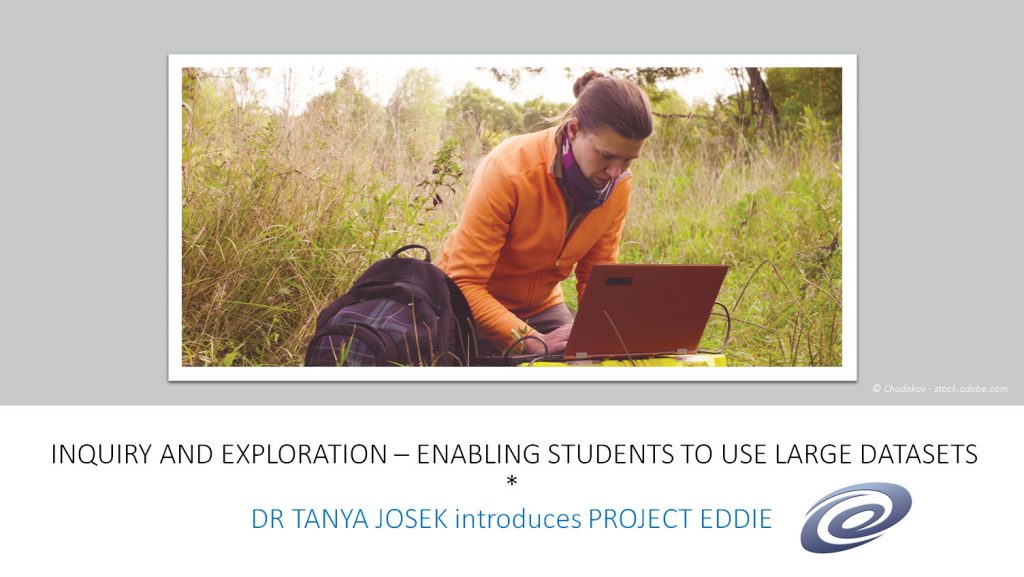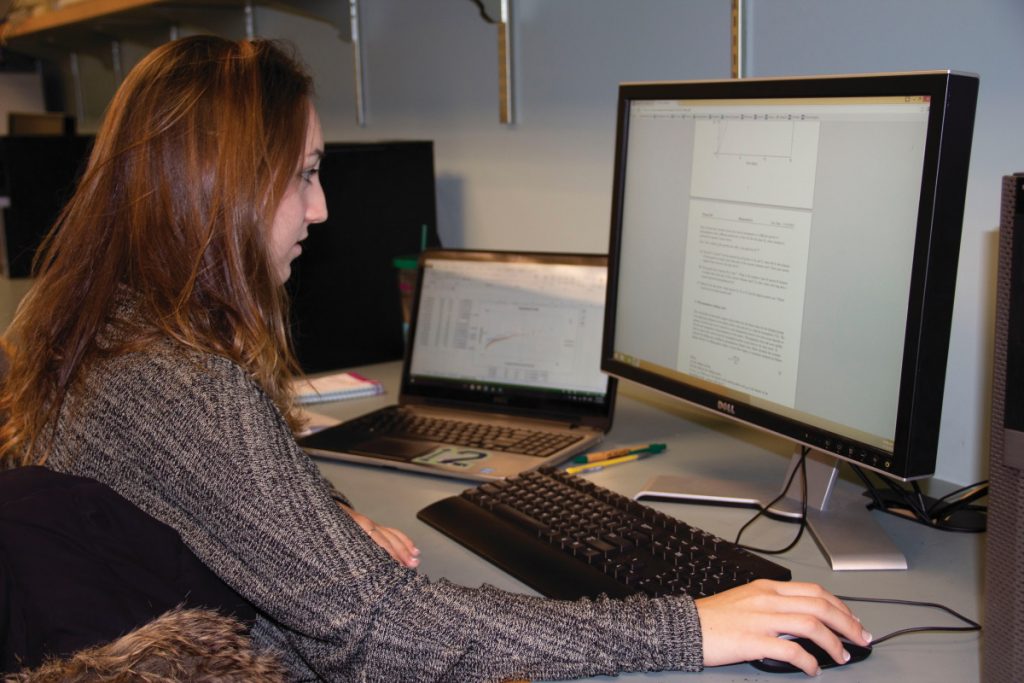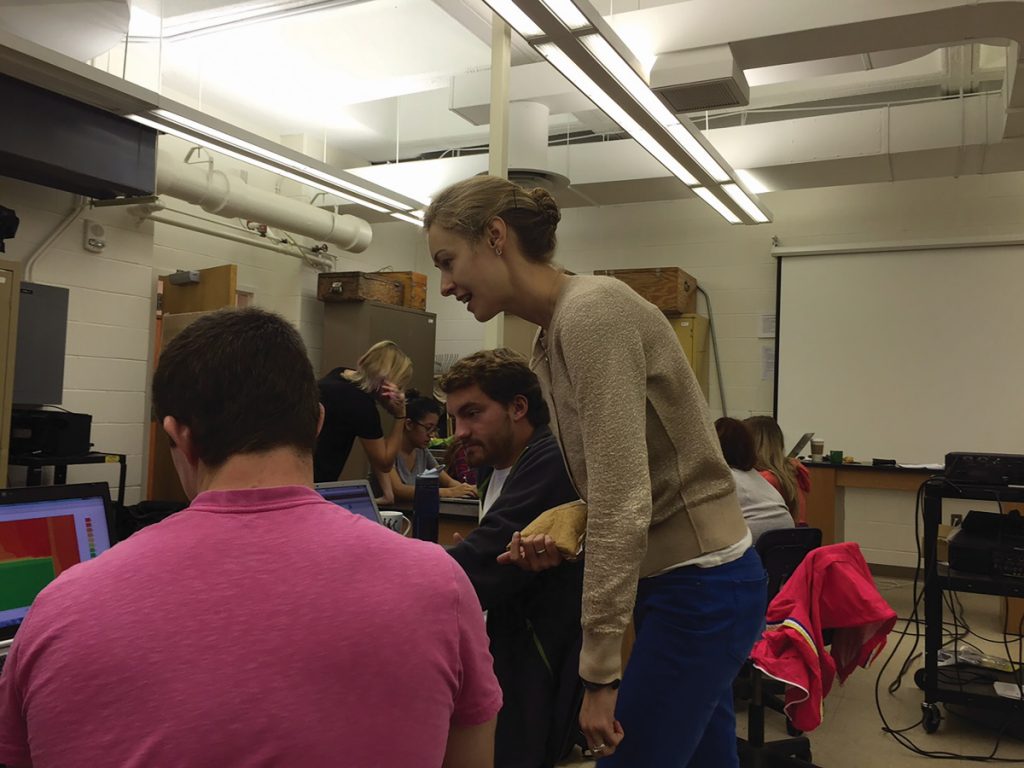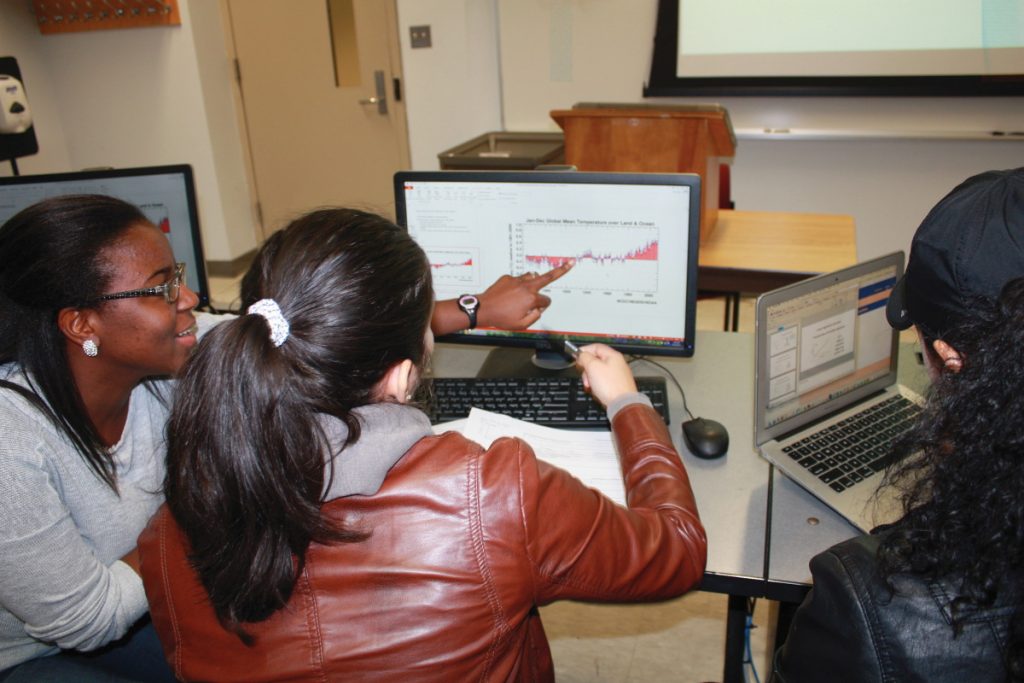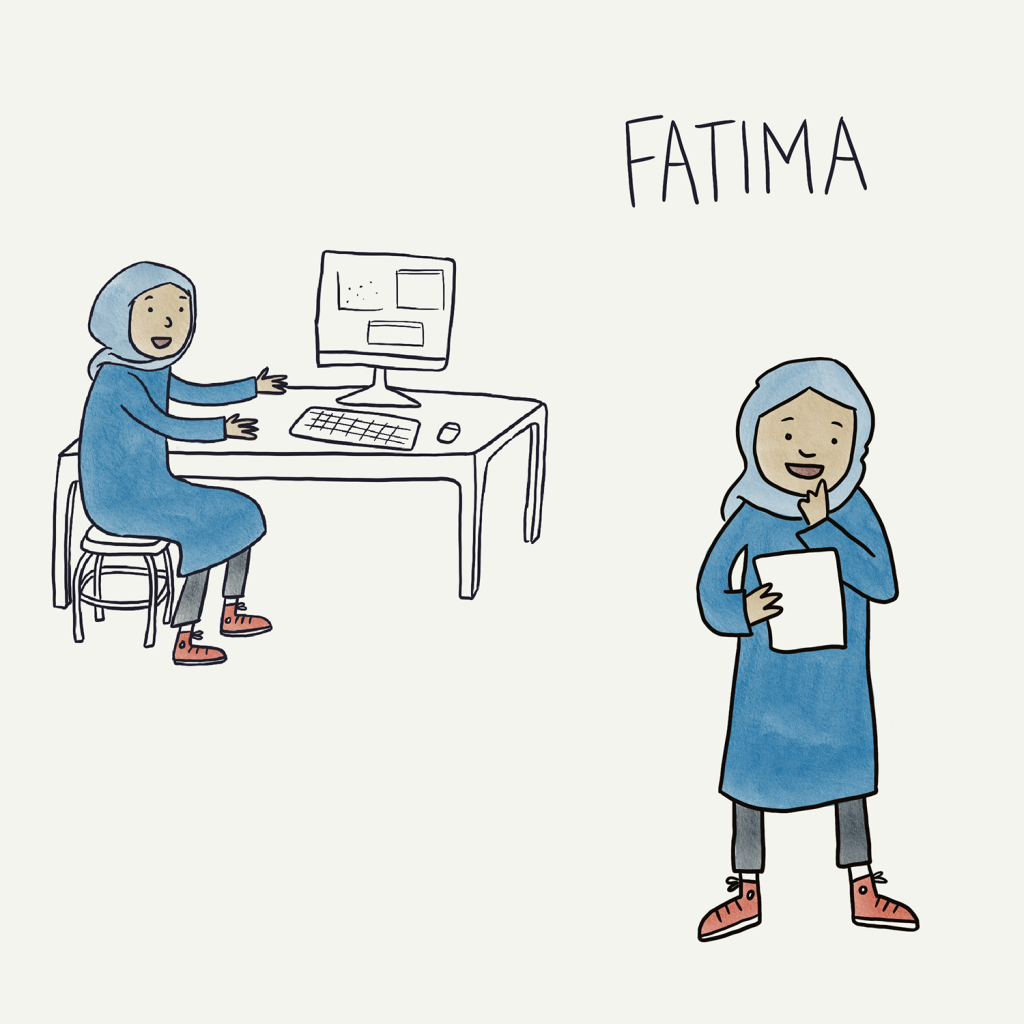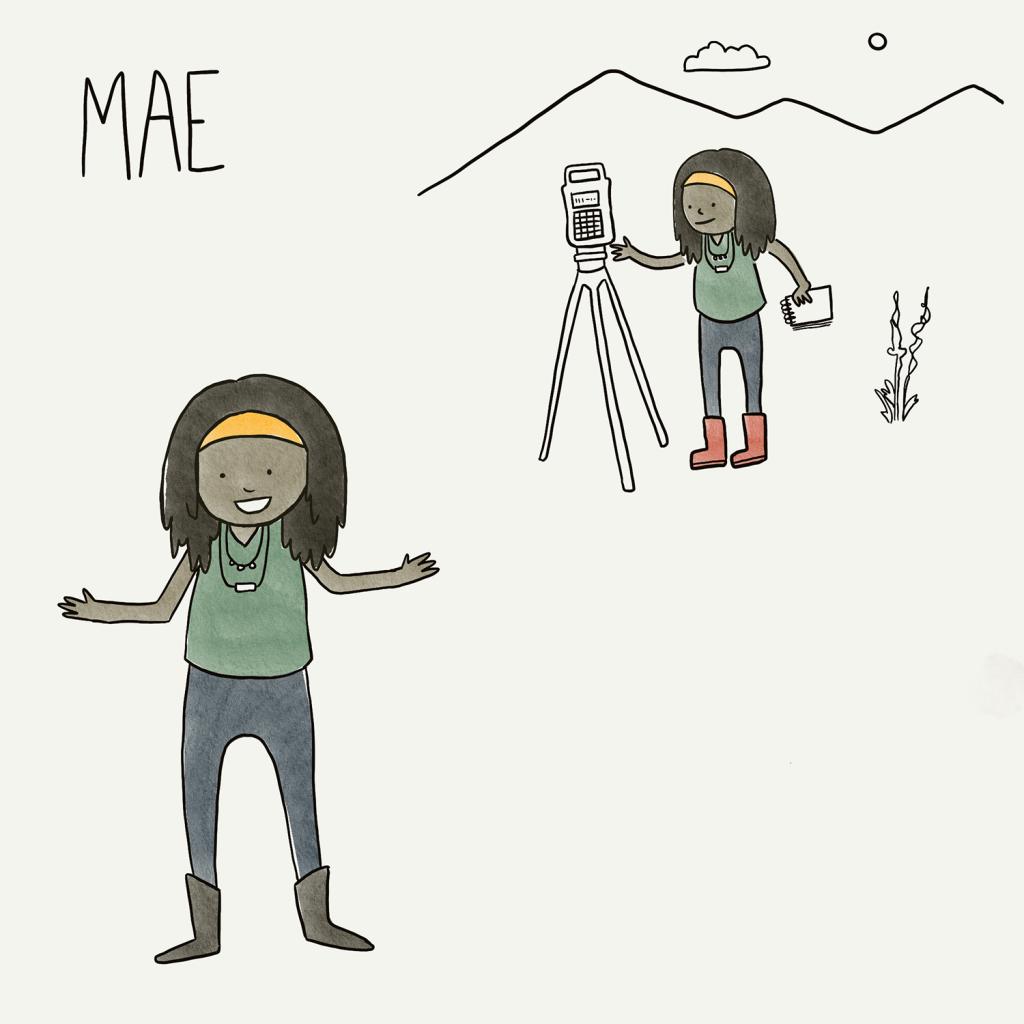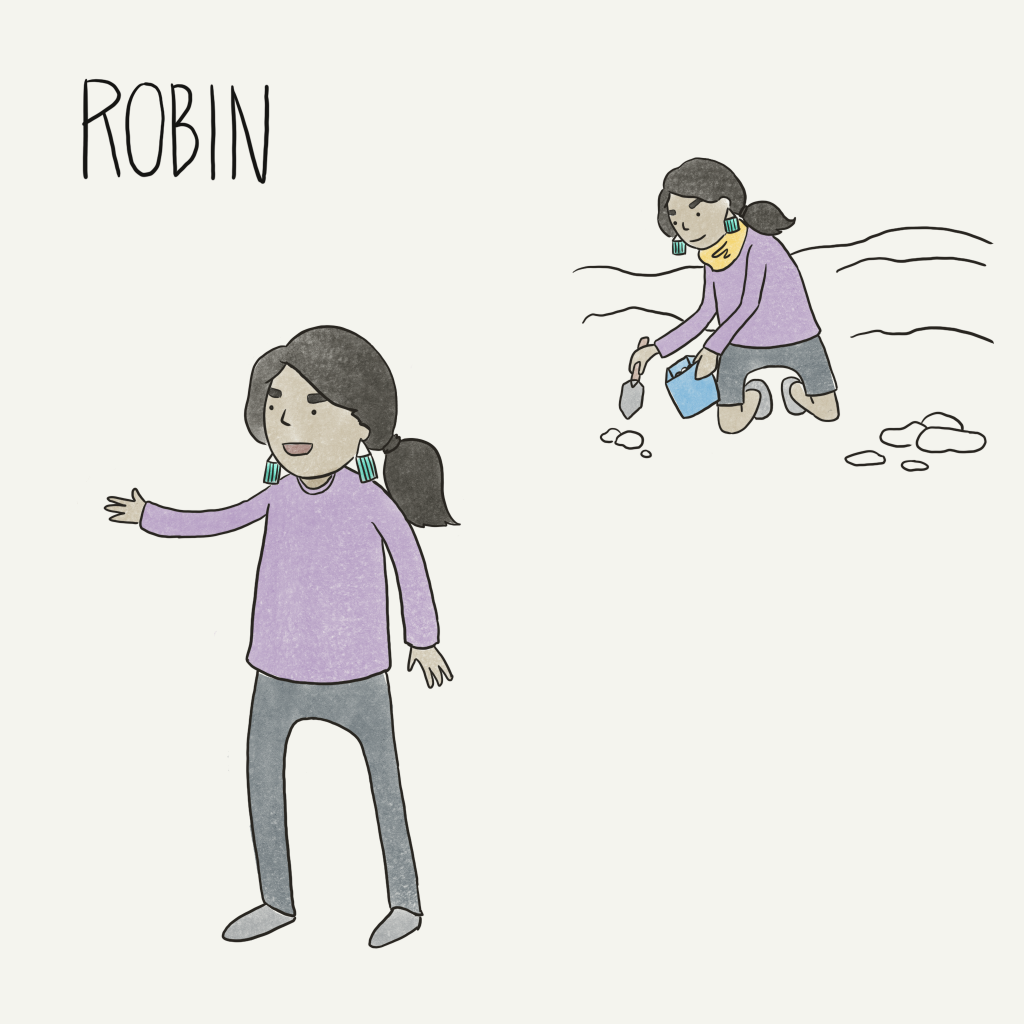Inquiry and exploration – enabling students to use large datasets
Dr Tanya Josek, based at Illinois State University in the US, forms part of Project EDDIE which uses large datasets to build quantitative reasoning. The project aims to empower students and provide a realistic view of what it means to be a scientist
We live in an age of information, where facts and data on almost any subject are available within a moment’s grasp. The vast majority of us continuously carry computers (in the form of smartphones), and a ten-second search grants us access to almost anything we want to know or learn about. Of course, this is not always a good thing – somewhat ironically, so much information creates problems associated with making sense of it all. Then, there are the perils of misinformation, which we see manifest as conspiracy theories and mind-boggling viewpoints.
Still, if we can find ways to navigate our way through the staggering amount of information at our fingertips, there are some genuinely life-changing possibilities. The advent of big data has created the possibility of highly tailored patient treatments, for instance, while the internet serves as a vast forum across which scientists can come together in a quest to improve research and its outcomes. In addition, there is the ushering in of quantitative approaches, where we can measure things as opposed to merely observing them.
It is with the benefits of quantitative reasoning in mind that a group of researchers has come together to form Project EDDIE (Environmental Data-Driven Inquiry and Exploration). EDDIE is a community of STEM (science, technology, engineering and mathematics) instructors and educational researchers that works to develop flexible classroom modules and resources. Dr Tanya Josek, who is part of the O’Reilly Research Team at Illinois State University in the US, is involved in EDDIE, which enables them to combine their love for entomology (the study of insects) with that of science education.
WHAT IS PROJECT EDDIE AIMING TO ACHIEVE?
The information age has given rise to large, publicly available datasets that can be utilised if the right approaches are taken. The community behind EDDIE works to make use of these datasets to engage students in STEM and improve their quantitative reasoning. “There are a range of teaching modules within Project EDDIE, spanning topics such as ecology, limnology, geology, hydrology, environmental sciences and macrosystems ecology,” explains Tanya. “The project also helps build the associated professional development needed to ensure effective use of the teaching modules but, for me, the chief aim is to empower students and give them a more realistic view of what it is to be a scientist.”
WHY IS PROJECT EDDIE NECESSARY?
EDDIE is performing an important role in filling an educational gap. As our ability to collect data improves, the amount of data collected grows. Not all data are of equal use and it can take a vast amount for scientists to draw conclusions that stand up to rigorous scrutiny. Giving students the opportunity to work with real – often enormous – datasets, gives them a greater appreciation for what working with data entails, providing them with the skills, knowledge and experience they will need if they are to become the next generation of scientists.
HOW DID TANYA COME TO BE INVOLVED IN THE PROJECT?
While still in graduate school, Tanya came to realise just how much they enjoyed teaching and education. Their PhD involved them creating a high school ecology unit that was focused on climate change and tickborne diseases, when one of their colleagues forwarded them the call for a Project EDDIE postdoctoral researcher. “I read more about the project and its goals and quickly realised it paired well with my experience creating the Next Generation Science Standards ecology unit and my interest in moving towards having more of a science education focus,” says Tanya. “Importantly, the EDDIE community is open to everyone interested in teaching and/or producing modules, with faculty mentor networks to help provide community spaces.”
These spaces are a place where the community members can discuss how the teaching of modules is progressing and there are workshops that help bring individuals together to work on how best to develop modules.
IN WHAT WAYS DOES PROJECT EDDIE BENEFIT STUDENTS?
As well as the aforementioned experience in working with large datasets that the project provides, it also helps introduce students to a range of real-world experiences that will serve them well throughout their careers. The data used within the modules are real, which instantly lends the work an authenticity that cannot help but be beneficial. Of course, that real data are used means that a student’s analysis is valid and could actually make a difference to the field in which they are operating. Students are also given the opportunity to ask their own questions and then use the data to answer those questions – a particularly important part of the scientific process.
Because the datasets are publicly available, there is no cost associated with obtaining them, which has its own benefits. As many students are coming together, they are able to compare their findings with each other; different types of analyses can help imbue each with greater meaning i.e., ‘do these alternative findings alter my own?’.
HOW CAN TEACHERS USE THE PROJECT’S OUTPUTS IN THE CLASSROOM?
Project EDDIE is composed of three initiatives: earth and ecosystems, macrosystems and environmental data. A huge range of teaching materials has been produced centred on the three areas, including ready-to-use modules that teachers can refer to in the classroom. Each module has instructor resources that are specific to that module and teachers are able to narrow each module down by subject and find ones that best fit their classroom objectives. In addition, there are other resources, such as statistical tests and software.
There are even some statistical vignettes that were designed by Tanya’s colleagues, Dax Soule and Michelle Weirathmueller. These vignettes include a diverse cast of characters to serve a wider use beyond the science. “Scientists in media are often depicted as cisgender, white men, which can make it hard for students who do not share that identity
to see themselves in science. So, my role with the statistical vignettes was to focus on diversity and inclusion within the cast,” explains Tanya. “We also wanted to make sure that when designing and naming these characters that we didn’t white-wash them or unintentionally reinforce stereotypes. We based both the name and appearance of characters on real people and worked with cultural houses to come up with the initial designs.”
WHAT ARE THE NEXT STEPS FOR PROJECT EDDIE?
Tanya and the team are focusing on expanding the community and developing the modules. The amount of publicly available data is continuously growing, so the more the team can develop the modules, the more educators and students they can reach. It is Tanya’s ambition to complete their postdoctoral studies and then become a module developer.
 DR TANYA JOSEK
DR TANYA JOSEK
(Pronouns: they/them)
O’Reilly and Darner Research Teams, Illinois State University, USA
FIELD OF RESEARCH: Entomology and Science Education
RESEARCH PROJECT: Tanya is involved with Project EDDIE, which aims to empower students and give them a more realistic view of what it is to be a scientist.
FUNDER: National Science Foundation
USING PROJECT EDDIE IN YOUR CLASSROOM
READY-TO-USE MODULES
Project EDDIE provides a wealth of resources to enable you to support your students’ learning. From ecological forecasting, to lake modelling, the modules cover a range of subjects related to the project sub-groups of:
Earth and Ecosystems
Environmental Data
Macrosystems
The Project EDDIE team is very thorough and each module provides:
Learning goals
Context for use
Teaching materials
Teaching notes and tips
Assessment
References and resources
The aim is for teachers to be able to incorporate the modules into lesson planning as easily as possible. As an example, here is an overview of the CLIMATE CHANGE MODULE.
LEARNING GOALS
Reference
https://doi.org/10.33424/FUTURUM156
We live in an age of information, where facts and data on almost any subject are available within a moment’s grasp. The vast majority of us continuously carry computers (in the form of smartphones), and a ten-second search grants us access to almost anything we want to know or learn about. Of course, this is not always a good thing – somewhat ironically, so much information creates problems associated with making sense of it all. Then, there are the perils of misinformation, which we see manifest as conspiracy theories and mind-boggling viewpoints.
Still, if we can find ways to navigate our way through the staggering amount of information at our fingertips, there are some genuinely life-changing possibilities. The advent of big data has created the possibility of highly tailored patient treatments, for instance, while the internet serves as a vast forum across which scientists can come together in a quest to improve research and its outcomes. In addition, there is the ushering in of quantitative approaches, where we can measure things as opposed to merely observing them.
It is with the benefits of quantitative reasoning in mind that a group of researchers has come together to form Project EDDIE (Environmental Data-Driven Inquiry and Exploration). EDDIE is a community of STEM (science, technology, engineering and mathematics) instructors and educational researchers that works to develop flexible classroom modules and resources. Dr Tanya Josek, who is part of the O’Reilly Research Team at Illinois State University in the US, is involved in EDDIE, which enables them to combine their love for entomology (the study of insects) with that of science education.
WHAT IS PROJECT EDDIE AIMING TO ACHIEVE?
The information age has given rise to large, publicly available datasets that can be utilised if the right approaches are taken. The community behind EDDIE works to make use of these datasets to engage students in STEM and improve their quantitative reasoning. “There are a range of teaching modules within Project EDDIE, spanning topics such as ecology, limnology, geology, hydrology, environmental sciences and macrosystems ecology,” explains Tanya. “The project also helps build the associated professional development needed to ensure effective use of the teaching modules but, for me, the chief aim is to empower students and give them a more realistic view of what it is to be a scientist.”
WHY IS PROJECT EDDIE NECESSARY?
EDDIE is performing an important role in filling an educational gap. As our ability to collect data improves, the amount of data collected grows. Not all data are of equal use and it can take a vast amount for scientists to draw conclusions that stand up to rigorous scrutiny. Giving students the opportunity to work with real – often enormous – datasets, gives them a greater appreciation for what working with data entails, providing them with the skills, knowledge and experience they will need if they are to become the next generation of scientists.
HOW DID TANYA COME TO BE INVOLVED IN THE PROJECT?
While still in graduate school, Tanya came to realise just how much they enjoyed teaching and education. Their PhD involved them creating a high school ecology unit that was focused on climate change and tickborne diseases, when one of their colleagues forwarded them the call for a Project EDDIE postdoctoral researcher. “I read more about the project and its goals and quickly realised it paired well with my experience creating the Next Generation Science Standards ecology unit and my interest in moving towards having more of a science education focus,” says Tanya. “Importantly, the EDDIE community is open to everyone interested in teaching and/or producing modules, with faculty mentor networks to help provide community spaces.”
These spaces are a place where the community members can discuss how the teaching of modules is progressing and there are workshops that help bring individuals together to work on how best to develop modules.
IN WHAT WAYS DOES PROJECT EDDIE BENEFIT STUDENTS?
As well as the aforementioned experience in working with large datasets that the project provides, it also helps introduce students to a range of real-world experiences that will serve them well throughout their careers. The data used within the modules are real, which instantly lends the work an authenticity that cannot help but be beneficial. Of course, that real data are used means that a student’s analysis is valid and could actually make a difference to the field in which they are operating. Students are also given the opportunity to ask their own questions and then use the data to answer those questions – a particularly important part of the scientific process.
Because the datasets are publicly available, there is no cost associated with obtaining them, which has its own benefits. As many students are coming together, they are able to compare their findings with each other; different types of analyses can help imbue each with greater meaning i.e., ‘do these alternative findings alter my own?’.
HOW CAN TEACHERS USE THE PROJECT’S OUTPUTS IN THE CLASSROOM?
Project EDDIE is composed of three initiatives: earth and ecosystems, macrosystems and environmental data. A huge range of teaching materials has been produced centred on the three areas, including ready-to-use modules that teachers can refer to in the classroom. Each module has instructor resources that are specific to that module and teachers are able to narrow each module down by subject and find ones that best fit their classroom objectives. In addition, there are other resources, such as statistical tests and software.
There are even some statistical vignettes that were designed by Tanya’s colleagues, Dax Soule and Michelle Weirathmueller. These vignettes include a diverse cast of characters to serve a wider use beyond the science. “Scientists in media are often depicted as cisgender, white men, which can make it hard for students who do not share that identity
to see themselves in science. So, my role with the statistical vignettes was to focus on diversity and inclusion within the cast,” explains Tanya. “We also wanted to make sure that when designing and naming these characters that we didn’t white-wash them or unintentionally reinforce stereotypes. We based both the name and appearance of characters on real people and worked with cultural houses to come up with the initial designs.”
WHAT ARE THE NEXT STEPS FOR PROJECT EDDIE?
Tanya and the team are focusing on expanding the community and developing the modules. The amount of publicly available data is continuously growing, so the more the team can develop the modules, the more educators and students they can reach. It is Tanya’s ambition to complete their postdoctoral studies and then become a module developer.
 DR TANYA JOSEK
DR TANYA JOSEK
(Pronouns: they/them)
O’Reilly and Darner Research Teams, Illinois State University, USA
FIELD OF RESEARCH: Entomology and Science Education
RESEARCH PROJECT: Tanya is involved with Project EDDIE, which aims to empower students and give them a more realistic view of what it is to be a scientist.
FUNDER: National Science Foundation
USING PROJECT EDDIE IN YOUR CLASSROOM
READY-TO-USE MODULES
Project EDDIE provides a wealth of resources to enable you to support your students’ learning. From ecological forecasting, to lake modelling, the modules cover a range of subjects related to the project sub-groups of:
Earth and Ecosystems
Environmental Data
Macrosystems
The Project EDDIE team is very thorough and each module provides:
Learning goals
Context for use
Teaching materials
Teaching notes and tips
Assessment
References and resources
The aim is for teachers to be able to incorporate the modules into lesson planning as easily as possible. As an example, here is an overview of the CLIMATE CHANGE MODULE.
LEARNING GOALS
- To analyse global temperature data to see if Earth’s average global temperatures are really increasing
- To analyse CO2 data to see if atmospheric levels are really increasing
- To correlate CO2 data with global temperature to see if there is a relationship
- To compare current trends with rates of change during pre-historic periods using ice core data
- To interpret what these results mean for understanding current climate change
- To learn basic shortcuts and graphing in Excel
DESCRIPTION
In this module, students will explore how we know that the climate is changing, using both recent records and pre-historic ice-core data, and will focus on graphing temporal data to examine these long-term changes.
KEY QUESTIONS ASKED
- What controls the Earth’s temperature?
- Is this global temperature changing over time? Is Earth ‘warming’? If so, at what rate?
- What might be causing this change in global average temperature?
- How are temperature and CO2 related?
- How can we compare the recent data to geologic history?
https://serc.carleton.edu/eddie/teaching_materials/modules/climate_change.html
STATISTICAL VIGNETTES
Designed to help teach quantitative concepts used in analysing data, Project EDDIE’s statistical vignettes are based on a cast of diverse characters. The vignettes teach quantitative reasoning skills, while also representing the range of people in the STEM community. The aim is for students to gain the analytical skills needed to succeed in STEM, as well as an understanding that it is an area for them, regardless of their background or identity.
THE VIGNETTES COVER THE CONCEPTS OF:
- Correlation coefficient
- Significant figures
- Normal distribution
- Linear regression
Tanya has always been interested in the wider role their scientific understanding can play; their academic aspirations do not focus on one particular dream project so much as a dream environment. “My dream is to create a classroom and research space that promotes the safety, wellness and joys of students and colleagues,” says Tanya. “I want my work to help facilitate the creation of similar spaces within academia to benefit more and more people.”
Working on the diverse characters for the statistical vignettes, Tanya is clearly playing their part in encouraging diversity and inclusion within STEM. Ensuring that LGBTQ+, BIPOC and people with disabilities are represented in the field is something Tanya is committed to and they believe that the two most important things are educating yourself and taking action. “It is important to find out how your field, academia and department have been built to work against providing spaces for specific groups,” explains Tanya. “It is essential that we all feel a responsibility to take real action, as opposed to performative action, to address and fix these issues.”
Enabling better representation in the sciences is a challenge, but one that brings huge rewards. Tanya explains, “One of the things that I am most proud of is being able to be a co-author on a paper promoting LGBTQ+ inclusive practices in the biology classroom. All the authors on the paper were amazing to work with and I feel lucky to have been able to work with them and ultimately publish something that can help LGBTQ+ students.”
Find out more about the diverse cast.
TANYA’S TOP TIPS
01 Work towards creating an inclusive classroom. This requires a lot of work upfront, followed by continuous work to learn how our classrooms might be unintentionally promoting racist, ableist or homophobic material, references or even phrases. It’s up to us to make our classrooms more inclusive.
02 It’s okay to be wrong, not know something or for things not to work! It’s important for your students to be reminded that you are only human – admitting you don’t know something is a sign of strength not weakness. Work with your students to find the answer or find solutions to problems when labs don’t work how you expected them to – this is an important part of the scientific process.
03 Rework, revisit and share. Our lessons are never perfect, so it’s always important to go back and improve them. If you think your lesson is really good – share it so that other teachers have the chance to try it too! This can lead to further collaborations on future lessons.
Do you have a question for Tanya or the Project EDDIE team?
Write it in the comments box below and Tanya or the Project EDDIE team will get back to you. (Remember, researchers are very busy people, so you may have to wait a few days.)



